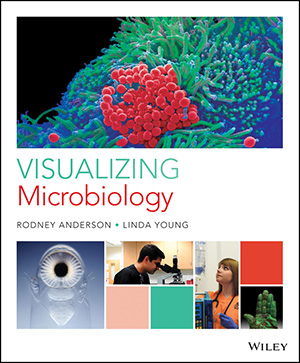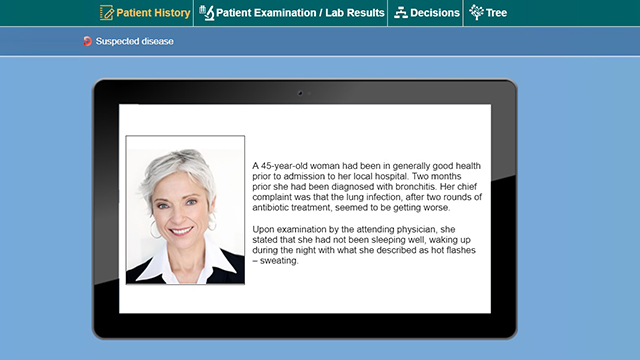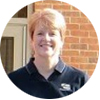
Visualizing Microbiology, 1st Edition
By Rod Anderson and Linda Young
Visualizing Microbiology is an introduction to microbiology for students who require the fundamentals of microbiology as a requirement for their course of study. The unique visual pedagogy of the Visualizing series provides a powerful combination of content, visuals, multimedia, and videos ideal for microbiology. A dynamic learning platform encouraging engagement with real clinical content, Visualizing Microbiology also brings the narrative to life with an applied clinical focus, helping students see and understand the unseen in the world of microbiology.
The next generation of WileyPLUS for Visualizing Microbiology gives instructors the freedom and flexibility to tailor content and easily manage their course to keep students engaged and on track.
Schedule a Demo Sign Up for a Test Drive Adopt WileyPLUSWant to learn more about WileyPLUS? Click Here

Case Studies
Written in the personal narrative format shown to enhance long-term knowledge retention, case study patient scenarios frame each chapter. Students are exposed to medical scenarios that accurately simulate true patient/care provider interactions. These realistic experiences nurture critical thinking skills while also encouraging the development of patient empathy, improving comprehension of patient compliance problems and facilitating student understanding of transcultural health care concerns.
Microbiology Toolbox Videos
These videos of key experiments in microbiology include many classic and common clinical lab experiments along with more recent lab techniques. These videos expose students to the lab and allow them to see best practices and the application of techniques being learned.
Animations
Course materials includes a comprehensive library of animations designed to aid student learning and to provide faculty with the tools to bring core microbiology concepts into the classroom. Visualizing Microbiology students benefit from an animated learning system consisting of vibrant art, five to seven 3D animations that focus on the core topics of microbiology, and supplemental 2D animations which allow students to review and revisit the concepts from the course.
- In the Hospital: Section opening video vignettes introduce the material to be covered and provide context for better student understanding and engagement. These openers are all shot in clinical settings to provide better student context.
- Clinical Decision Trees: Several cases covering a range of topics are reviewed during the course. These activities allow students to apply the basic information learned within a clinical application, helping them build critical thinking skills.
Features Include

Rodney P. Anderson received his Ph.D. in biological sciences from the University of Iowa in 1989. His doctoral work centered on protein synthesis mechanisms in E. coli. After graduate school, he began his academic career at Ohio Northern University where he continues to teach and conduct research with undergraduates in the Department of Biological and Allied Health Sciences. He teaches microbiology for majors and allied health students as well as courses in genetics. He has also introduced non-majors to microbiology through interdisciplinary seminars in disease and society.
Anderson has been actively involved in microbiology education. He was previously president of ASM’s Conference on Undergraduate Education, which developed the core curriculum for undergraduate microbiology courses, and has organized and spoken at education division symposia at ASM’s General Meeting. Outreach activities have included Microbial Discovery Workshops for high school science instructors as well as discovery science activities at local elementary schools. He is the author of two books published by ASM press: Outbreak and The Invisible ABCs.

Linda M. Young, since earning her Ph.D. in botany at Ohio State University (OSU) in 1988, has been teaching freshman and advanced-level biology courses at Ohio Northern University (ONU), a student-centered institution which emphasizes effective instruction as a faculty member’s principle responsibility. Throughout her tenure, Young has regularly directed student-based research projects and periodically collaborated with investigators at OSU. She served seven years as the assistant dean of the Getty College of Arts and Sciences, which gave her the opportunity to implement several programs to assist students experiencing academic difficulty, ease the transition of freshman into college, and support the endeavors of high-achieving students. Although initially educated as a plant/cell physiologist, changing departmental needs led to her retraining. Consequently, Young now also teaches microbiology for Allied Health Sciences (nursing) as well as introduction to microbiology (majors). Her research has also changed and now targets infection control issues and antibiosis. Young serves locally as a member of the Allen County MRSA Task Force and has previously authored the laboratory manual used for general botany at ONU.
1. The Microbial World
2. The Chemical Basis of Life
3. Principles of Microscopy
4. Prokaryotic Organisms
5. Eukaryotic Organisms
6. Viruses
7. Microbial Metabolism
8. Microbial Genetics
9. Microbial Sampling, Growth, and Control
10. Innate Immunity
11. Adaptive Immunity
12. Immune Disorders and Vaccination
13. Microbial Pathogenesis
14. Antimicrobial Agents
15. Infectious Disease Epidemiology
16. Diseases of the Respiratory System
17. Diseases of the Skin and Eyes
18. Diseases of the Nervous System
19. Diseases of the Cardiovascular and Lymphatic Systems
20. Diseases of the Gastrointestinal Tract
21. Diseases of the Genitourinary Tract
22. Environmental and Industrial Microbiology

